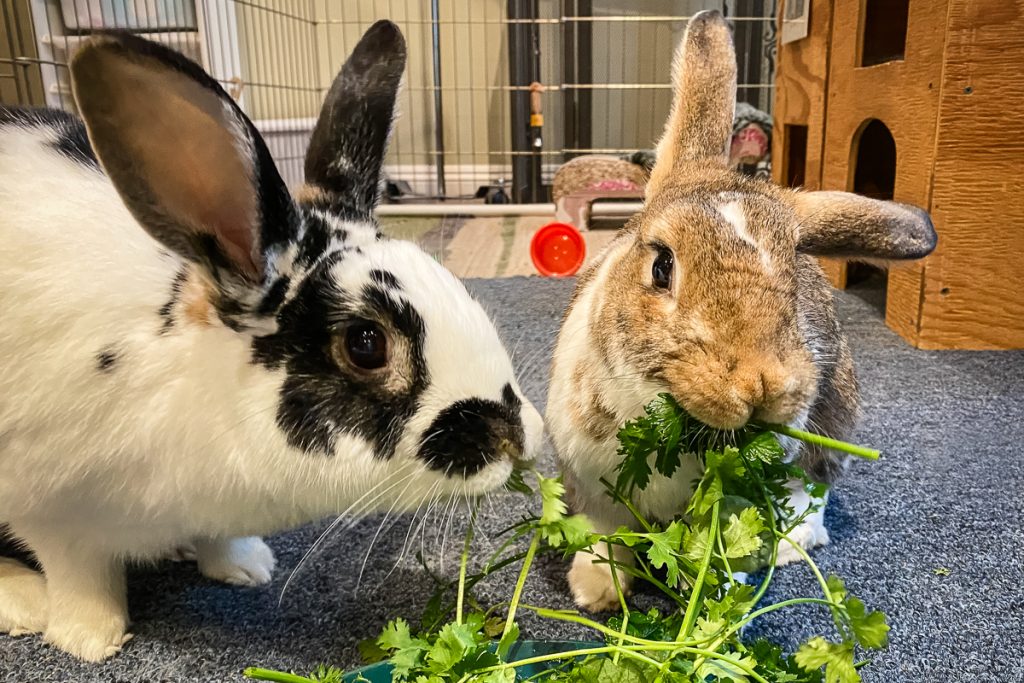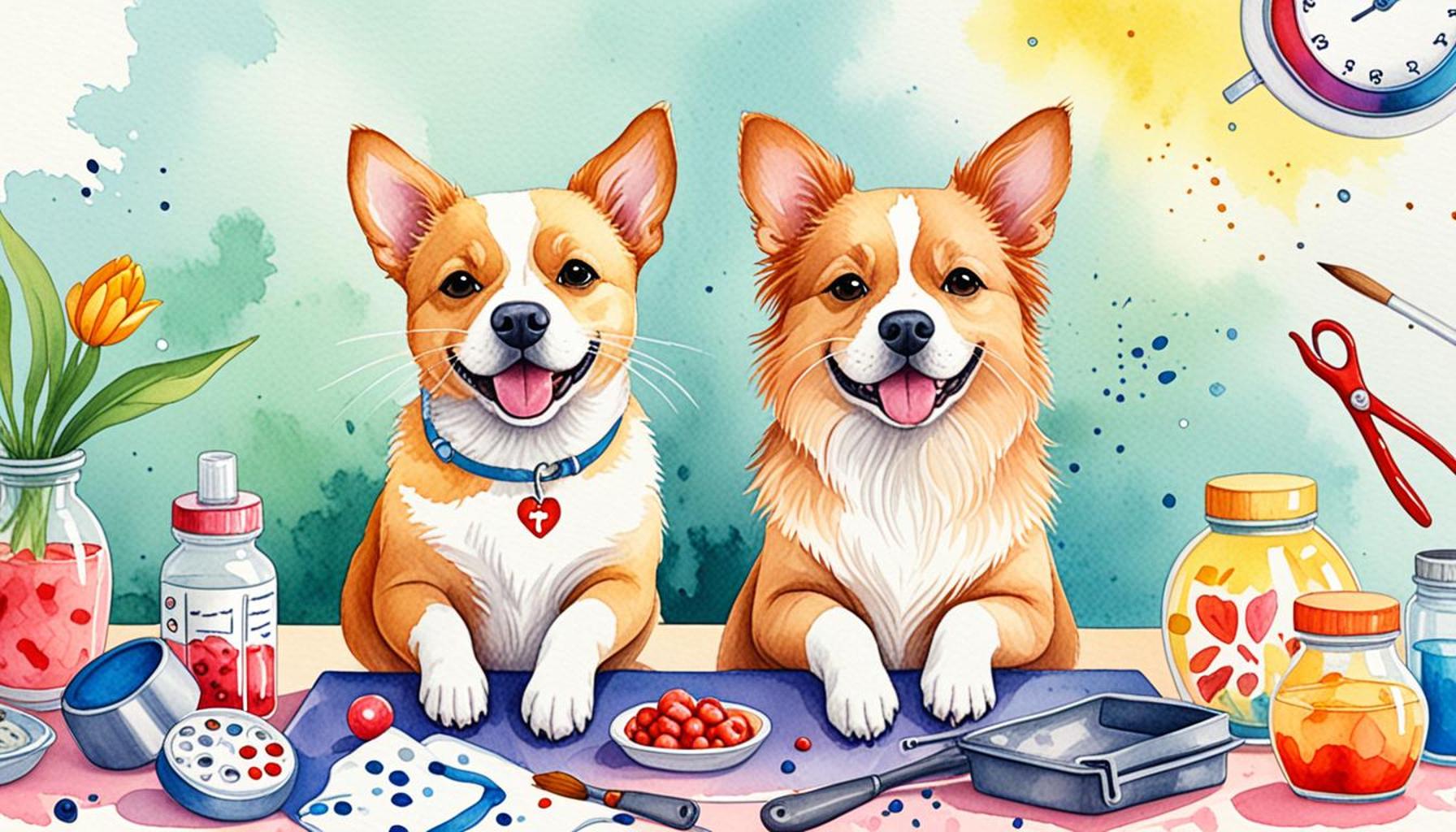How to Train Pet Rabbits to Live Indoors A Complete Guide

The Benefits of Indoor Living for Rabbits
Bringing a pet rabbit into your home has its unique joys, particularly when it comes to creating an inviting indoor space for them. These fluffy companions, often associated with the great outdoors, can actually thrive as part of your household. By embracing indoor living, you give your rabbit a chance to develop a close bond with you, remain safe from external threats, and explore an enriched environment designed to cater to their instinctive behaviors.
Why Choose Indoor Living?
Indoor rabbits have the opportunity to bond closely with their owners, cultivating a relationship built on trust and affection. A bunny that lives indoors is often more socialized, developing a personality that is curious and playful, making them delightful companions. Additionally, by safeguarding your rabbit from outdoor predators such as hawks, raccoons, and even domestic cats, you are ensuring their safety. The unpredictability of weather conditions, be it extreme heat, cold, or rain, also poses a significant risk to outdoor rabbits. An indoor environment allows your pet to be comfortable year-round.
Another critical advantage of indoor living is the availability of a stimulating environment. Boredom can lead to destructive behaviors in rabbits, which is why it is imperative to provide a space filled with safe toys, tunnels, and occasional challenges to keep their minds engaged. For instance, consider creating a rabbit-friendly obstacle course using cardboard boxes, or invest in puzzle feeders that dispense treats. Such activities can promote natural foraging behavior and provide hours of entertainment for your pet.
Creating a Rabbit-Friendly Space
Training your pet rabbit for indoor living involves understanding their natural instincts and behaviors. It is vital to create a designated area that caters to their specific needs. Key components of an ideal indoor rabbit living space include:

- Establishing a litter box routine is paramount. Rabbits are naturally inclined to keep their living areas clean, so with patience and consistency, you can train them to use the litter box effectively.
- Providing enrichment activities keeps your rabbit mentally stimulated. Consider rotating their toys and introducing new ones regularly to maintain their interest. Information on rabbit-safe items can often be found on pet care websites or in local pet stores.
- Setting up a safe and secure environment for exploration is essential. Baby gates or exercise pens can help create a space where your rabbit can roam freely while keeping them away from hazards like electrical cords or toxic houseplants.
As we venture further into the world of indoor rabbit care, this complete guide will delve into essential training techniques, selecting the right supplies, and tips for turning any indoor space into a rabbit-friendly haven. By embracing these practices, you’re preparing to welcome your furry friend into a life filled with love and happiness. Get ready to transform your living environment into an enriched paradise tailored just for your indoor rabbit!
CHECK OUT: Click here to explore more
Essential Training Techniques for Indoor Rabbits
Training your pet rabbit to adapt to indoor living requires patience and understanding of their unique behaviors. Unlike cats or dogs, rabbits have their ways of learning, and their motivations differ significantly. This section will explore effective training techniques that can help your rabbit feel at home inside while also encouraging good habits.
Establishing a Litter Box Habit
One of the first things to tackle with indoor rabbits is the litter box routine. Fortunately, rabbits are relatively clean animals that prefer to use designated areas for their bathroom needs. To start this process, choose a specific spot in your home to place a litter box. Fill it with rabbit-safe litter, such as paper-based products or aspen shavings, avoiding clay-based or clumping litters that can be harmful.
To encourage your rabbit to use their litter box, observe their habits closely. When you see them starting to eliminate outside of the box, gently pick them up and place them inside. Repeat this process consistently, and soon they will associate the litter box with the correct behavior. Remember to offer plenty of positive reinforcement, such as treats or gentle petting, whenever they use the litter box successfully. This method of training will not only help keep your space clean but also solidify the trust between you and your pet.
Exercise and Enrichment Training
Rabbits need ample exercise to maintain good physical and mental health. To facilitate this, it’s essential to introduce regular playtime in a rabbit-proofed area of your home. Consider utilizing an outdoor space or a large room where your rabbit can hop freely. During these sessions, you can engage them in structured activities that mimic their natural instincts; for example, setting up a tunnel system using cardboard boxes can provide hours of fun and explore their curiosity.
Moreover, incorporating enrichment activities into their routine can prevent boredom and destructive tendencies. Here are several ideas to keep your bunny entertained:
- Using rabbit-safe chew toys made from natural materials like wood or hay.
- Creating foraging opportunities by hiding treats in puzzle feeders.
- Rotating toys weekly to introduce new challenges and prevent monotony.
- Establishing a play area that includes tunnels, ramps, and safe items for them to explore.
By providing a stimulating atmosphere, you not only enhance your rabbit’s enjoyment of their space but also encourage physical activity, which is crucial for their overall health. Remember, a happy and engaged rabbit is one that will thrive in an indoor living situation.
The Importance of Socialization
Socialization is key when it comes to training indoor rabbits. Regular interaction with humans and other household pets can help your rabbit become more comfortable and confident. Spend quality time with your bunny daily, allowing them to approach you at their own pace. Offering treats or gentle strokes can help build their trust in you further. Additionally, consider organizing playdates with other friendly pets, ensuring that all interactions are closely monitored. This exposure will help your rabbit learn appropriate social behavior and enhance your home environment’s harmony.
As you embark on the journey of training your pet rabbit to live indoors, remember that each bunny is unique, and patience is vital. Establishing consistent routines, providing a stimulating space, and nurturing their social skills will lead to a fulfilling indoor lifestyle for your furry friend.
| Advantage | Details |
|---|---|
| Indoor Safety | Creating a safe environment protects rabbits from predators and hazards. |
| Bonding Opportunities | Living indoors allows more interaction and bonding time with your pet. |
| Space for Exercise | Providing a designated play area helps keep rabbits healthy and stimulated. |
| Personalized Training | Customized training techniques can enhance communication and understanding. |
Training your pet rabbit to live indoors not only enriches their lives but yours as well. One of the most significant advantages is the indoor safety that protects them from outdoor dangers such as predators. This controlled environment can also prevent escape incidents and injuries that often occur outside.Moreover, indoor living fosters bonding opportunities. Spending more time with your pet can lead to stronger connections as they become accustomed to your routine and voice. This closeness facilitates personalized training approaches that can cater to your rabbit’s unique personality and needs. Furthermore, designating a specific play area allows for ample space for exercise, essential for their physical and mental health. Ensuring that they have enough room to hop and explore unfettered will keep them active and engaged. As you delve deeper into this guide, you’ll find more effective strategies for living harmoniously with your indoor rabbit.
CHECK OUT: Click here to explore more
Creating a Safe and Comfortable Indoor Environment
As you train your pet rabbit to live indoors, it is paramount to create a safe and comfortable environment that caters to their needs. Unlike more traditional pets such as dogs or cats, rabbits have a set of unique requirements that must be met to ensure their well-being. This means considering their need for space, proper housing, and a stress-free atmosphere.
Choosing the Right Living Space
Your rabbit’s living area should be spacious enough for them to move around freely. In general, the larger the space, the better. A well-designed rabbit enclosure can serve as a home base for your bunny. You can easily purchase or build a custom hutch with multiple levels and open spaces where your rabbit can explore. Remember to include a designated area for litter, a cozy spot for resting, and toys for entertainment.
Consider positioning the rabbit’s living space in a quiet corner of your home, away from heavy foot traffic or loud noises, which can cause stress. Avoid placing their habitat in direct sunlight or near heat sources, as rabbits are sensitive to temperature changes. Moreover, securing the perimeter of their living area can protect them from potential hazards, such as electrical cords or small objects that could be swallowed.
Food and Hydration Training
Feeding your rabbit a healthy diet is crucial, and understanding their nutritional needs will play a vital role in your training process. A consistent routine for feeding and hydrating your rabbit encourages them to enjoy meal times and also contributes to a stable environment. High-quality hay should comprise the majority of their diet, and it’s important to supplement it with fresh vegetables and a small amount of rabbit pellets.
To encourage a healthy eating habit, establish set times for feeding your rabbit each day. Monitor their appetite and observe any changes, as abrupt shifts can indicate potential health issues. Additionally, ensure your rabbit always has access to fresh, clean water, whether from a bowl or a water bottle. Regular hydration is essential, particularly in a home environment where rabbits may not have access to natural water sources.
Implementing Boundaries and Commands
Bunnies need to understand their boundaries and adopt specific commands over time. Training your rabbit to respond to basic commands such as “come” or “stay” can provide structure and enhance communication between you and your pet. To start, use treats and an encouraging tone when you’re teaching them these commands. You might begin by standing a few feet away and calling your rabbit over, rewarding them with a treat when they respond. Consistency is key; practicing this daily will help reinforce learning.
Additionally, defining zones within your home can help set clear boundaries. You might designate areas in which they are allowed or a special place where they can learn to calm down during stressful situations. This not only teaches them discipline but assists in managing your space effectively.
Understanding Common Behavioral Traits
To train your rabbit effectively, understanding their behavioral traits is essential. Rabbits can be social and affectionate, but they may also exhibit signs of anxiety or stress in new environments. Recognizing behaviors such as grinding teeth, thumping, or hiding can help you identify when they are uncomfortable or frightened. Providing a safe retreat, such as a cozy hiding spot or a pop-up tent, can help alleviate their stress levels and make them feel secure.
Evaluate their behavior continuously to guide your training approach effectively. Keep in mind that patience and consistency will result in a well-adjusted pet rabbit that thrives indoors.
CHECK OUT: Click here to explore more
Conclusion
Training your pet rabbit to thrive indoors can be an incredibly rewarding experience, providing you with a unique bond and joyful companionship. By fostering a safe and comfortable environment, you’ll create a space where your rabbit can explore, play, and relax. Remember, understanding their nutritional needs and establishing a consistent feeding routine not only promotes good health but also strengthens the trust between you and your bunny.
Implementing boundaries and teaching simple commands makes communication effortless and builds a harmonious living situation. As you train your rabbit, it’s essential to recognize and adapt to their behavioral traits. Every bunny has a personality, and understanding what makes your pet tick will allow for a tailored approach to training. Be vigilant in observing their body language and adjusting your methods accordingly. Keeping their stress levels low will ultimately lead to a more relaxed and happier pet.
Equipped with patience, consistency, and love, you will unlock the potential for a fulfilling indoor life for your rabbit. Whether you’re a first-time rabbit owner or looking to enhance your current pet’s experience, following the steps outlined in this guide will not only facilitate training but can also uncover the joyful quirks and companionship these wonderful animals offer. Dive deeper, explore their needs, and you’ll discover just how rewarding it is to provide a loving home for your indoor rabbit.



